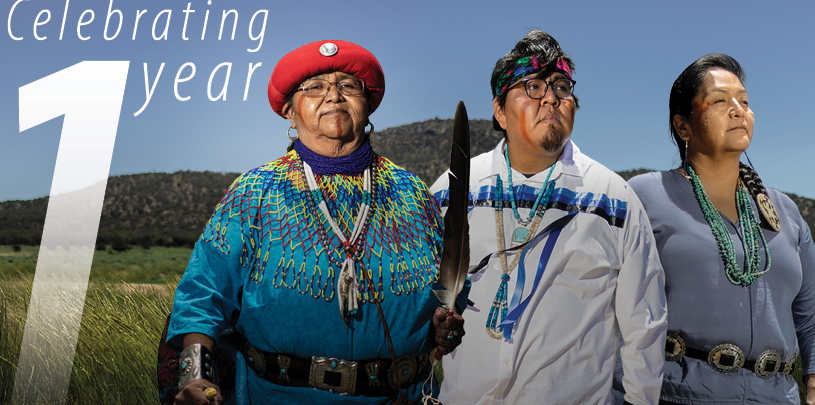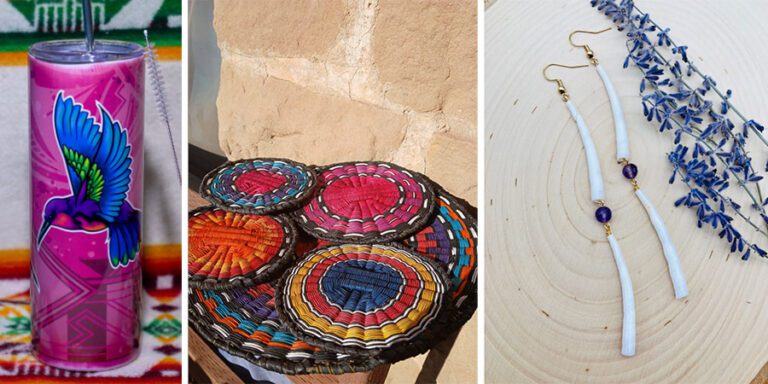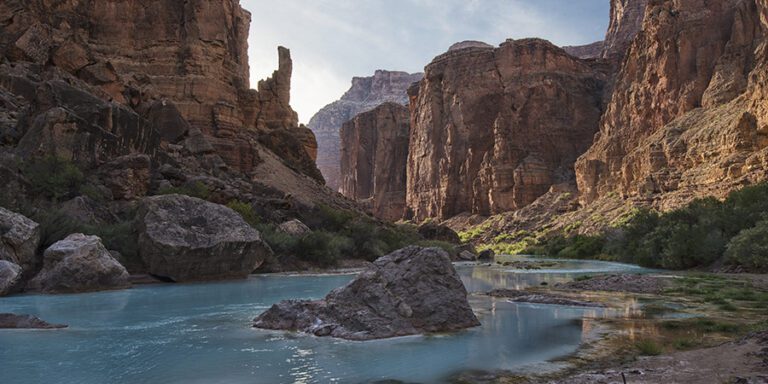
Baaj Nwaavjo I’tah Kukveni Grand Canyon National Monument is one year old. Learn about the cultural resources, waters, and plants and animals it protects.
On August 8, 2023, decades of advocacy led by Native American tribes culminated with the designation of Baaj Nwaavjo I’tah Kukveni – Ancestral Footprints of the Grand Canyon National Monument. The hard-won national monument permanently protects about 1 million acres of tribes’ ancestral lands around Grand Canyon National Park. Today we celebrate one year of Baaj Nwaavjo I’tah Kukveni.
Divided into three parcels on the north and south rims of the Grand Canyon, Baaj Nwaavjo I’tah Kukveni spans forests and grasslands that have sustained Native peoples for millennia. These ancestral lands remain important to at least 13 tribes today. Baaj nwaavjo means “where Indigenous peoples roam” in Havasupai. I’tah kukveni means “our ancestral footprints” in Hopi.
See the panoramic vistas and learn about cultural resources, precious waters, traditional foods and medicines, and plants and animals in this new story map
Tribes led the push for Baaj Nwaavjo I’tah Kukveni
Baaj Nwaavjo I’tah Kukveni is the third national monument created at the request of tribes to conserve Indigenous history, following the designations of Avi Kwa Ame in 2023 and Bears Ears in 2016.
“What’s most important to us as Native people is protecting this land for the future generations, so they can enjoy it and feel blessed by its beauty,” said Carletta Tilousi, Grand Canyon Tribal Coalition Coordinator and member of the Havasupai Tribe.
The Grand Canyon Tribal Coalition — comprised of the Havasupai Tribe, Hopi Tribe, Hualapai Tribe, Kaibab Band of Paiute Indians, Las Vegas Tribe of Paiutes, Moapa Band of Paiute Indians, Paiute Indian Tribe of Utah, Shivwits Band of Paiutes, Navajo Nation, San Juan Southern Paiute Tribe, Yavapai-Apache Nation, Zuni Tribe, and Colorado River Indian Tribes — petitioned the White House in 2023 to create the national monument. The ensuing designation of Baaj Nwaavjo I’tah Kukveni speaks to the overwhelming support, which has coalesced over many years, for safeguarding the lands and waters around the Grand Canyon.
In addition to protecting thousands of cultural and archaeological sites, Baaj Nwaavjo I’tah Kukveni protects a critical portion of the Colorado River, which provides water to 40 million people and 5.5 million acres of agriculture downstream.
Celebrating Baaj Nwaavjo I’tah Kukveni
“The waterways are arteries and veins carrying that lifeblood, not only to Arizona, but the entire world,” said Timothy Nuvangyaoma, chair of the Hopi Tribe.
The monument lands also provide refuge for animals of all shapes, colors, and sizes. Bighorn sheep scramble up steep cliffs. Endangered California condors soar above canyon rims. Mule deer nibble their way between summer and winter pastures. Plants too have evolved to thrive here, like the endangered Brady pincushion cactus that grows only as large as a golf ball.
Thanks to the vision and leadership of tribes, and the overwhelming support of local communities and businesses, hunting and angling groups, conservation organizations, faith leaders, and many more, Baaj Nwaavjo I’tah Kukveni ensures that the Grand Canyon’s critical water supplies, wildlife, and cultural and religious sites are protected now and forever for future generations.




